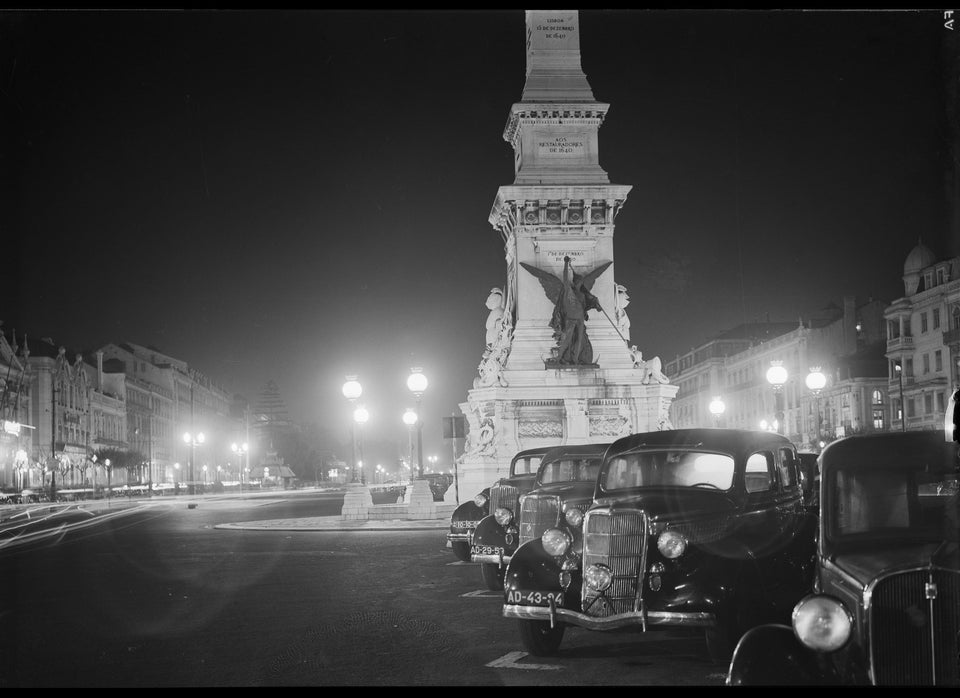"In 1940 Lisbon, happiness was staged so that God could believe it still existed," wrote the French writer Antoine de Saint-Exupery. During World War II, Saint-Exupery escaped from France to Portugal and ended up in Lisbon, waiting for a visa to go to America. He was not the only one; the Portuguese capital became a symbol of hope for many refugees. Even Isla and Rick, the star-crossed lovers in the film Casablanca, sought a ticket to that "great embarkation point." Thousands had flooded the city, trying to obtain the documents necessary to escape to the United States or Palestine. Not all found their way.
Wartime Lisbon was a city of intrigue. Life was cheap, morals tenuous. Espionage flourished under the cover of neutrality. The city became the site of plots with all the elements of a good spy novel: double and triple agents, prostitution rings used to extract secrets from the unsuspecting, escape routes through the ever-present fog and chic hotel bars filled with MI6 and Gestapo agents in disguise. Stays in the city inspired authors such as Graham Greene and Ian Fleming to write some of the best espionage tales of the last century, from Our Man in Havana to the first of the 007 series, Casino Royale.
Fleming's path is worth rediscovering today. An intelligence officer in the Royal Navy, he was in Portugal to devise Operation Golden Eye, an Allied plan to monitor Spain and defend Gibraltar in the event that Spain joined the war on the side of the Axis Powers. He stayed in Estoril, a resort town on the Atlantic coast where the moneyed flocked. Refusing to live as the other refugees did, they acted as if on vacation, donning party dresses and flocking to bars and casinos at night. In fact, so many of the Europe's exiled royalty took refuge in Estoril that Life Magazine called it "The Royal Morgue of Europe."
Royals mixed with spies and wealthy Jewish refugees at the Estoril Casino, Europe's largest gambling house. It was the characters at the blackjack tables that inspired Fleming to write Casino Royale. Among them was Dusko Popov, a handsome double agent who earned the codename "The Tricycle" for his penchant for having a woman on each arm and sometimes a third in tow.
The Hotel Palacio served as home for Fleming and many other British agents. The hotel bar's most popular drink was the martini -- shaken, not stirred -- unless the Allies had won a battle in North Africa, in which case the agents would be informed via the "champagne news service." The hotel's dimly-lit bar is now known as the Spies Bar. It has not changed much since World War II: its walls are still paneled with dark wood and lined with leather couches.
Today, there is a walking tour in Lisbon dedicated to espionage. On it, you'll learn about Eddie Chapman, an English safe-breaker and double agent known as Zig-Zag, who spent a month with a prostitute in Cais do Sodre, then a red-light district near Lisbon's docks. You won't visit brothels on the tour, but you will visit the Hotel Avenida, where German agents presented the allies with the Valkyrie Conspiracy, a plan to assassinate Hitler. The Germans used a secret passage from the train station into the hotel so they could come and go without being noticed. In Lisbon, everyone was being watched.
These stories and others are detailed in Margarida Magalhães Ramalho's new book, Lisbon, a City During Wartime. A chapter called Spyland focuses on espionage in and around Lisbon during the war, detailing kidnappings by the Gestapo and stories of secret agents like Nubar Gulbenkian, who worked for the British secret service department MI9 organizing the evacuation of refugees from occupied Europe. The book is the center of an exhibition the author has curated called "The Last Frontier: Lisbon During Wartime." Two rooms dedicated to the "Spyland" feature photographs of agents and the places they frequented, and the hand-written hotel registries of Ian Fleming and other secret agents. The exhibition can be viewed at Lisbon's Torreão Poente do Terreiro do Paço until December 15th.
